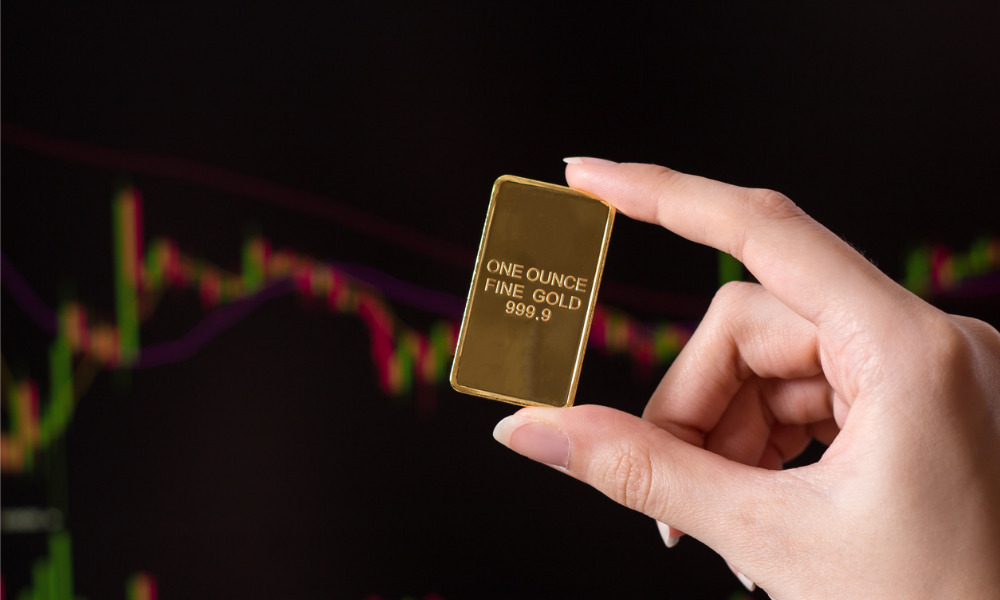The haven metal has had a long history of preserving wealth, but investing in it requires doing some digging

With inflation and geopolitical tensions on the minds of every investor and their mother, everyone is looking for ways to de-risk their portfolios. While some tech-savvy millennials and Gen Z investors might look at cryptocurrencies and NFTs as the way forward, many others might think about investing in gold.
So is it a good idea to put some of your money in the precious metal? What are the reasons why you should invest in gold? And how exactly can you do it? Those questions and more will be addressed in the sections below.
Gold as an investment
In the grand universe of investment, gold belongs under the umbrella of commodities, which are known for their sensitivity to price swings. But gold is less volatile than certain other commodities, like oil or agricultural products that can be impacted by seasonal events or economic weakness.
There are different ways to invest in gold. One way is to buy gold bullion, which is the physical metal that’s refined and made into a form suitable for trading like gold bar or gold coins. Jewellery and other gold products are also popular among “gold bugs” (a slang term used to describe enthusiastic gold investors) though they tend to come with a mark-up due to the labour put into crafting them as well as pricing forces in the retail market.
Professional investors can also profit from price movements in gold by trading gold futures. The large majority of people aren’t likely to know how a futures contract works, so other vehicles like ETFs, mutual funds, or gold stocks (more on those later) will generally be more suitable for the average investor.
Why invest in gold?
There are several benefits from buying gold as an investment. For one thing, it’s been a trusted asset for wealth preservation. Tied to that is its ability to hedge against inflation, as gold prices have often gone up alongside a general rise in prices and losses in the U.S. dollar’s value.
Gold has also been regarded as a safe haven during times of economic uncertainty. Unlike currencies, gold isn’t directly affected by interest rate decisions. And while central banks can increase the amount of money by printing more of it, which lowers the value of currencies, the amount of gold is limited. That scarcity has allowed gold to maintain its value over time, which adds to its strength as an insurance policy during adverse economic events.
Drawbacks of investing in gold
As they say, there’s no such thing as a free lunch, and that applies equally to gold. When someone decides to invest in physical gold, they sacrifice liquidity – compared to investment funds or public securities like stocks and bonds, gold is more challenging to convert into cash, and the transaction costs can be substantial. And while gold has the ability to preserve wealth over the long term, it can’t produce regular income like fixed-income instruments or dividend stocks.
It can also be a challenge to store physical gold. Aside from needing a place to store their gold bars, for example, investors in physical gold have to make sure they’re protected against the added risk of loss or theft. That includes getting insurance that covers the risk of their gold holdings being stolen or somehow getting misplaced.
Investors might also hesitate to invest in gold if they’re concerned about investing responsibly. Like other industries that extract resources from the earth, the activities of gold mining companies have historically had a significant impact on the environment and the communities around them, and high-profile disasters at some sites have called attention to the health and safety risks faced by the workers in these companies. But some mining companies also show social responsibility as they offer employment opportunities, contribute to infrastructure improvement, and contribute toward health and education in the communities they touch.
The historical performance of gold
As of March 2, 2022, the price of gold was US$1,922.30 per ounce, according to macrotrends.net. Adjusted for inflation, that same ounce of gold would have been worth around $2045 at the end of 2021, and US$1,750 in March 2020, when the COVID-19 pandemic began. In March 2012, the inflation-adjusted price of gold was approximately $2040.
Twenty years ago in March 2002, gold was around $460 an ounce; in January 1990, it was worth roughly $900 an ounce. Gold hit its peak in January 1980, when it was worth around $2,450 an ounce. Ten years before that, in 1970, it was at its lowest at around $250 an ounce.
Making gold part of your portfolio
Rather than investing directly in physical gold, the average investor will likely want to diversify into gold by investing in gold exchange-traded funds or mutual funds. When it comes to these vehicles, it’s important to look under the hood; gold funds might get their exposure to the haven metal by investing directly in physical gold (so-called bullion funds), but some invest in gold mining companies (gold miners or resource stocks), while other gold-backed funds rely on complex financial instruments to bet on the price of gold rather than investing in gold itself.
Gold mining companies’ share prices aren’t strictly correlated to the price of gold, since they have other operating and maintenance costs to deal with. But on the flip side, gold stocks have the potential to stay up even as the price of gold drops, and many gold mining companies reward their shareholders with dividends.
Is it a good time to invest in gold?
So is it a good idea to invest in the gold market right now? It might be worth having some exposure, if only for the sake of portfolio diversification.
Due to ongoing supply-chain problems created by the pandemic, inflation has reached multi-decade highs in Canada, the U.S., and other parts of the world. It’s putting pressure on households, and has become a major headache for central bankers.
After years of maintaining record low interest rates, central banks are starting to introduce rate hikes. That could cool down inflation, but it could also slow down economic growth. There’s also rising geopolitical risk that could impact the economy.
There’s a lot of uncertainty in the air, and it might very well be time for gold to shine again.



